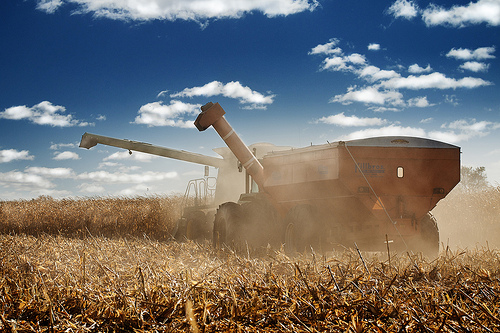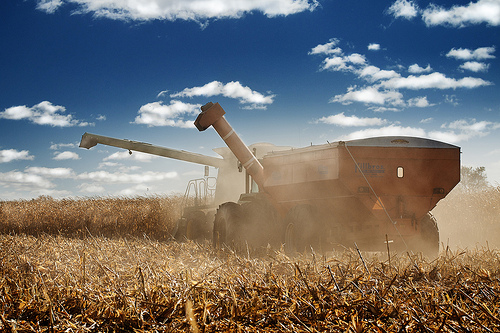 Let’s phase out wasteful subsidies.Photo: Earl WilkersonCross-posted from the Center for American Progress.
Let’s phase out wasteful subsidies.Photo: Earl WilkersonCross-posted from the Center for American Progress.
Agriculture and the family farm are the foundation of strong and healthy rural communities, and a critical engine of U.S. economic growth. Regrettably, a key aspect of U.S. agricultural policy does not meaningfully contribute to the success of U.S. farmers: Most federal farm subsidies are outdated, expensive, and inequitable.
In an era of fiscal constraint and more immediate budget priorities, many of these ineffective subsidies can no longer be justified. The federal government each year pays owners of historical croplands $4.9 billion in “direct payment” subsidies regardless of whether the people receiving the payments farm their lands. And these payments are automatically made every year despite rising fiscal deficits and a relatively healthy farm economy that saw net farm income grow by 27 percent in 2010.
An exclusive set of commodities — corn, sorghum, barley, oats, cotton, wheat, rice, soybeans, and peanuts — have received 72 percent, or $160 billion, of all U.S. farm payments since 1996. Even among this small group of commodities there are widespread disparities. Upland cotton and rice growers, for example, receive a disproportionately high level of farm program payments relative to the other crops. Meanwhile, fruit and vegetable growers, and the majority of other agricultural producers in the United States, receive minimal direct subsidies despite contributing more than 50 percent of the total farm gate value in the United States.
Because direct payments are linked to historical lands and amount of acres, the benefits of the payments tend to accrue to larger farm operations with more acreage. The Department of Agriculture found that 62 percent of farm payments, including direct payments, went to the largest 12 percent of farms in 2008. The Government Accountability Office found that 305 farm operations that same year each received $200,000 or more in direct payments.
Direct payments also tend to flow to people with high incomes. The GAO found that recipients of direct payments and other farm program payments in 2008 were more than “twice as likely to have higher incomes as other tax filers.”
Several members of Congress receive direct payments and other farm program payments. According to a recent analysis by the Environmental Working Group, 23 federal lawmakers currently in Congress — six Democrats and 17 Republicans — received agricultural subsidies between 1995 and 2009. Republicans took home $5.3 million in taxpayer-funded subsidies during this period while Democrats received just less than $500,000.
Other agricultural subsidies are doled out based on production, making prices more volatile for farmers in the United States and overseas, and often undermining U.S. development and antipoverty programs. As commodity prices fluctuate, agricultural subsidy programs in general could eventually cost taxpayers between $7 billion and $24 billion a year.
Bottom line: Poorly designed and ineffective agricultural subsidy programs weaken the competitiveness of our nation’s farmers and rural communities, drain taxpayer resources, and should be reformed. Among the recommendations we make in our paper [PDF]:
- The United States should reduce and phase out the $4.9 billion per year in automatic direct payments to individuals and apply the savings to deficit reduction.
- As direct payments are phased out, the maximum individual direct payment should be capped at an appropriate level and the overall income eligibility amounts should be reduced.
- $650 million saved from direct-payment reduction should be reinvested into existing rural-based programs to provide incentives for renewable clean energy, energy efficiency, and advanced dedicated biomass energy crops on the farm.
- A portion of these savings should also be dedicated to enhancing U.S. agricultural exports in a manner that promotes small business and is consistent with international trade obligations.
- All government spending on agricultural subsidies should be disclosed in an open and transparent manner.
If these recommendations are implemented, the federal government can save more than $35 billion by 2020 and apply most of these savings to deficit reduction while also investing in a clean energy future in our rural communities.




